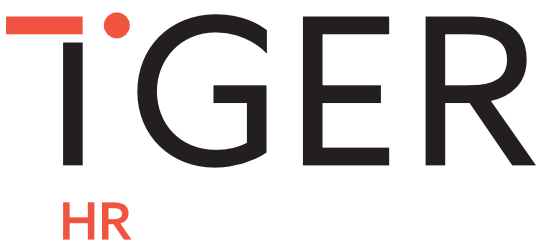As organisations look for ways to attract and retain the best talent in this ongoing candidate-led market, hiring managers are increasingly examining the importance of employee engagement in the modern workplace. However, just as the world of work continues to shift and transform, what it means to engage staff is also evolving as companies look to the entire employee experience.
A report by Cascade, an HR and payroll software supplier found that 44% of the 447 HR directors surveyed said their biggest challenge for the year ahead would be engagement1. The concern is warranted – a 2020 report from CharlieHR has found that 86% of SME employees don’t feel they are involved in decisions made at work (to the extent to which they’d like to be)2 .
“A motivated employee is not only happier, healthier and more fulfilled at work, but they are also more productive,” says Jonny Gifford, a senior research advisor at the Chartered Institute of Personnel and Development (CIPD).
“Research has shown a number of relationships between the way people are managed, their attitudes and behaviour and business performance. Organisations can expect to witness greater profit, revenue growth, innovation, staff retention and customer satisfaction as a result of motivation and other aspects of employee engagement.”
As it stands, just over half (58%) of the UK’s employees feel engaged at work3. So how can companies bridge the gap? One option is engaging the services of an employee experience manager. However, if you want to do this yourself, the first step is acknowledging the difference between the two concepts – and how they translate practically into the workplace.
Engagement v experience
“Employee engagement is the connection to the organisation or the brand, the connection to leadership and management and the connection you have with the job itself,” says Niall Ryan, employee experience consultant and former Head of Employee Engagement at Harrods.
“But the employee experience is how the organisation works internally for the employees who work there, encompassing the experiences they have with the leadership and their manager, all the way through to ‘how do I do my job’?” he continues.
“It’s experiences that shape how engaged people are.”
The end result should be employees that not only want to go the extra mile, but “generally demonstrate a high level of awareness surrounding the wider business context of an organisation, and carry out their work with these in mind,” says Jonny.
Going back to basics
However, before even considering how you implement these connections, it’s essential to consider how you are responding to employee needs at a basic level.
“Maslow’s hierarchy of needs applies to engagement – are you taking care of your employees’ hygienic needs, covering the basics such as good food in the canteen, the right tools to the job and clear guidance from managers? Even the basics of recognition – is anyone saying thank you?” asks Niall.
“When you take care of the hygienic needs, the security of a job, more capable management, you can then start to look at forums for two-way dialogue, where people feel like they are listened to, they feel like they can change things, they are contributing,” he concludes.

Creating connections
It is at this point that the brand, leadership and job role start to come into play. But just how do you make sure that every employee is connected with your brand, their leaders/managers and their role?
You don’t.
“It’s a fallacy to engage 100% of your workforce. It’s not possible and I don’t think you should put your efforts into doing that,” says Niall.
“There are people who are fully engaged, disengaged and then there are people in the middle who are passive. The passives – or the swing vote, as I like to call them – are the ones to give more focus to,” he reveals.
“Passives aren’t ineffective people by any means. They are probably the backbone of your organisation. But they are the people you need to be mindful of, because they are not as immersed in their roles as you would like which can be for many reasons; professional and personal.”
In order to ensure your passive staff members don’t disengage, consider facilitating relationships between them and your fully engaged employees, or engagement ambassadors, those who are enthusiastic about every element of your business. It will get these employees thinking more productively about the role they can play in the organisation, all while contributing to a positive employee experience. While the passive workforce should be your focus, “we can’t forget those who are fully engaged – it is still important to show them how valued they are in the organisation,” Niall notes.
Measuring success
A strong engagement strategy is well and good, but with no way to measure it, there’s no way of figuring out if it works. Prior to implementing any new initiatives, you need to capture a clear picture of where your employees are at, where you want to get to and how will you know when you’ve reached your goals.
“A barrier to engagement can be a lack of knowledge surrounding what motivates employees,” says Jonny.
“Evidence-based people management is vital if employers are to understand what factors are de-motivating their employees and make good decisions on which engagement initiatives to employ. This will often highlight things like poor line management or frustrating HR systems.”
The aforementioned data is traditionally collected through annual employee surveys. Getting this method right is crucial.
“Measuring engagement with composite scores carries a serious risk of over‐simplification. It is easy to fall into the trap of combining a range of distinct factors into an unhelpful single metric,” explains Jonny.
“A better approach is to measure distinct components – for example, motivation, organisational commitment, organisational citizenship, shared values, autonomy and employee voice.”
For Niall, the problem lies in the ‘annual’: “Annual employee surveys are falling out of favour quite rapidly, with a shift into pulse surveys.”
“Your business asks the customer in real time what they think about your brand, so it’s an oddity to only ask your employees once a year. The pulse survey process should allow organisations to be agile in its listening and agile in its response,” he continues.

Shifting strategies
As the world of work shifts, your business needs to shift with it. Taking a pulse approach, with bite-sized changes, can make huge differences to your overall engagement strategy.
“The most powerful thing to exist in my career is communications. Whatever you do, you need a core foundation of communicating whatever you’re doing as an organisation that’s both meaningful and relevant for your employees,” says Niall.
This means building and maintaining a robust communications framework within your business that fosters two-way dialogue and leadership visibility and accessibility, keeping employees connected to the brand, purpose, strategy, their leaders and managers and each other.
Managerial recognition is a well-established element of engagement, but where businesses can find additional value is at a peer to peer level: “The strongest relationships in an organisation are often team relationships, so you need to create an opportunity to support and strengthen those relationships and communities,” says Niall.
“Recognition isn’t just about the company doing top-down stuff, it’s about creating opportunities for people to recognise each other.”
At the crux of the matter is an emphasis on the employee voice.
“It’s essential to give employees throughout the organisation a meaningful voice, to challenge or reinforce organisational policies and procedures,” says Jonny.
“Involving employees in these decisions is key.”
Niall agrees, noting it all comes back to the employee experience: “When things aren’t quite working right, identify a group of people who are passionate about helping the organisation and let them be agents of change.”
“By facilitating a cross-functional group of people – doesn’t matter what level – that all have a common focus, you’re offering the wider organisation a chance to really help and get involved.”
–
This piece is the fifth in the series: ‘Make your working life exceptional: a guide to creating a better workplace.’ Read part one about mental health here, part two about flexible working, part three about workplace design and part four about diversity.
–
1. https://www.cascadehr.co.uk/hr-landscape-2018/
2. https://www.charliehr.com/state-of-employee-engagement






